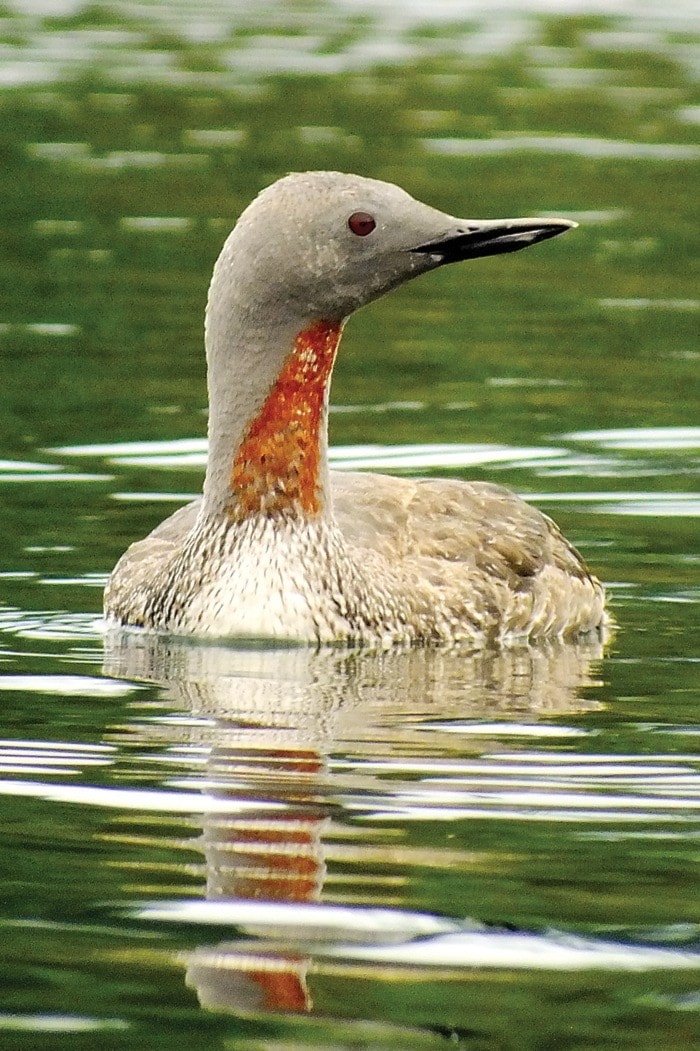A loon’s call is a classic sound on pristine Canadian waters, and with tits large size and musical, stuttering call, this aquatic bird is destined to remain a national emblem.
Four loon species frequent the Pacific Northwest, with the large 80 centimetre (32 inch) Common Loon most often seen, true to its name.
Other local species include the Pacific and, a rare winter vagrant, the Yellow-billed.
The red-throated Loon (Gavia stellata), at 64 cm (25 in), may be the smallest and slimmest of our loons, but a brilliant brick-red throat patch and striped nape in summer make them a delightful, if uncommon, find.
Over the past few weeks, photographer Brian Kyle has regularly encountered a lone ‘Red-throat’ while paddling the Campbell River estuary.
Local bird enthusiast Ed Silkens commented that the species is not often seen in local waters.
Proficient swimmers and divers, loons prey largely on fish, often surfacing to swallow them following an underwater pursuit; a very long pointed, dagger-like bill is perfectly appointed to that task.
Heavy birds, most loons must taxi out of the water with long, furious paddles in order to become airborne.
Distinctive in locomotion, the ‘Red-throat’ is the only loon able to spring directly into the air from land.
The ‘Red-throat’ winters south along the Pacific Coast, to southern California, but usually breeds at higher latitudes.
In autumn, it’s worth a trip down to the estuary to see this gorgeous bird, known as ‘Plongeon catmarin’ to the French.
Did you know?
A shocking 40 per cent of court-ordered environmental fines are not paid by offenders in BC. (Source: West Coast Environmental Law)
E-mail Christine at: wildernesswest@shaw.ca
